Archive for October, 2017
Car Review: 2018 Holden Astra LS/LT/LT-Z Sedan
It’s back to the future for Holden as the Astra nameplate on a sedan resurfaces with the sedans developed in Europe and built in Korea. The name replaces the Cruze, itself a resurrection of a previously used nomenclature. We’ve had the European sourced Astra hatch for a while and there’s also a new wagon version on the way. Private Fleet spends time with the mid-spec LT, top spec LT-Z, and entry level LS (there’s also a LS+), all fitted with the same engine and transmission combination. Up front, and the sole choice for a powerplant in the Astra sedan, is a 1.4L petrol engine, complete with turbo and good for 110 kilowatts. There’s 240 torques available between 2000 to 4000 rpm, with an extra five if you go for the six speed manual which is available in the LS only. Recommended go-go juice for the 52 litre tank is 91RON, of which it’ll drink at over eight litres per one hundred kilometres in an urban environment. On the freeway AWT saw a best of 6.3 in the LS and 7.1L/100 km in the LT-Z. Holden’s Astra sedan brochure doesn’t appear to specify weight, however elsewhere it’s quoted as being just under 1300 kilograms.
Up front, and the sole choice for a powerplant in the Astra sedan, is a 1.4L petrol engine, complete with turbo and good for 110 kilowatts. There’s 240 torques available between 2000 to 4000 rpm, with an extra five if you go for the six speed manual which is available in the LS only. Recommended go-go juice for the 52 litre tank is 91RON, of which it’ll drink at over eight litres per one hundred kilometres in an urban environment. On the freeway AWT saw a best of 6.3 in the LS and 7.1L/100 km in the LT-Z. Holden’s Astra sedan brochure doesn’t appear to specify weight, however elsewhere it’s quoted as being just under 1300 kilograms. The engine itself is a willing revver, especially so when the torque is on tap…for the most part. What was noticeable was the lag between a hard prod of the go-pedal, the change down a cog or two, and the resulting leap forward. In tighter Sydney traffic when a quick response was needed in changing lanes, that hesitation could potentially result in a safe move not being as safe as it should be. Also, in the LS, a noticeable whine, an unusual note at that, was audible and not found in the LT or LT-Z. Otherwise, once warmed up, the six speed auto had invisible gear changes up and down on a flat road, and downshifted nicely, holding gears, on the bigger downward slopes out west.
The engine itself is a willing revver, especially so when the torque is on tap…for the most part. What was noticeable was the lag between a hard prod of the go-pedal, the change down a cog or two, and the resulting leap forward. In tighter Sydney traffic when a quick response was needed in changing lanes, that hesitation could potentially result in a safe move not being as safe as it should be. Also, in the LS, a noticeable whine, an unusual note at that, was audible and not found in the LT or LT-Z. Otherwise, once warmed up, the six speed auto had invisible gear changes up and down on a flat road, and downshifted nicely, holding gears, on the bigger downward slopes out west. It’s a trim, lithe, almost handsome car to look at though. It’s a longish 4665 mm in length and hides a boot of good depth and breadth at 465 litres. The rear deck lid does have old school hinges that swing down into the boot space though. The boot on the LT and LT-Z gain a small, discreet, lip spoiler as well. It’s also broad, with over 1800 mm in total width, and stands 1457 mm tall. What this gives you is 1003 mm front headroom, 1068 mm legroom, 1394 mm shoulder room, and in the rear 1350 mm shoulder room. 939 mm and 951 mm are the numbers in the rear for leg and head room.
It’s a trim, lithe, almost handsome car to look at though. It’s a longish 4665 mm in length and hides a boot of good depth and breadth at 465 litres. The rear deck lid does have old school hinges that swing down into the boot space though. The boot on the LT and LT-Z gain a small, discreet, lip spoiler as well. It’s also broad, with over 1800 mm in total width, and stands 1457 mm tall. What this gives you is 1003 mm front headroom, 1068 mm legroom, 1394 mm shoulder room, and in the rear 1350 mm shoulder room. 939 mm and 951 mm are the numbers in the rear for leg and head room.
 Up front, the three are virtually identical, bar chrome strips in the lower corners of the front bar for the LT/LT-Z. The headlights are LED DRL backed from the LS+ upwards and provide quite a decent spread of light. The headlight surrounds themselves gleam in the sunlight and add a solid measure of presence to the look. Wheels wise they’re all alloys, with a 16/17/18 inch and appropriate tyre size to match. There’s 205/55/16, 225/45/17, and 225/40/18s. And each of these contribute to the ride quality to the differing models…
Up front, the three are virtually identical, bar chrome strips in the lower corners of the front bar for the LT/LT-Z. The headlights are LED DRL backed from the LS+ upwards and provide quite a decent spread of light. The headlight surrounds themselves gleam in the sunlight and add a solid measure of presence to the look. Wheels wise they’re all alloys, with a 16/17/18 inch and appropriate tyre size to match. There’s 205/55/16, 225/45/17, and 225/40/18s. And each of these contribute to the ride quality to the differing models…

 The LS is undoubtably the most plush, soft, of the three, but by no means does it lack grip when pushed. The rubber on the LS is from Hankook, the LT and LT-Z have Kumho Ecsta. Both brands provide more than enough grip and even occasionally chirp when when hard acceleration is given and both brands do provide a rumble, a somewhat intrusive rumble, on the coarser chip tarmac in Sydney. The LT and LT-Z also benefit from the fettling the Australia engineers have given, with a firmer and more sporting ride, less rebound but a small measure of more harshness.
The LS is undoubtably the most plush, soft, of the three, but by no means does it lack grip when pushed. The rubber on the LS is from Hankook, the LT and LT-Z have Kumho Ecsta. Both brands provide more than enough grip and even occasionally chirp when when hard acceleration is given and both brands do provide a rumble, a somewhat intrusive rumble, on the coarser chip tarmac in Sydney. The LT and LT-Z also benefit from the fettling the Australia engineers have given, with a firmer and more sporting ride, less rebound but a small measure of more harshness. All three are brilliant freeway cruisers but it’s around town that the suspension tune really shines. In the varied road conditions that Sydney throws up, from table flat to mildly pockmarked to rutted and broken tarmac, all three dealt with them adroitly and with the words “sure footed” writ large. Only occasionally would the LT-Z, with the stiffest feel, skip and that was more so on the more ragged undulations that some corners have. There’s plenty of conversation from the steering wheel vinyl in the LS, leather in the LT/LT-Z), with an almost tactile amount of constant feedback through to the driver.
All three are brilliant freeway cruisers but it’s around town that the suspension tune really shines. In the varied road conditions that Sydney throws up, from table flat to mildly pockmarked to rutted and broken tarmac, all three dealt with them adroitly and with the words “sure footed” writ large. Only occasionally would the LT-Z, with the stiffest feel, skip and that was more so on the more ragged undulations that some corners have. There’s plenty of conversation from the steering wheel vinyl in the LS, leather in the LT/LT-Z), with an almost tactile amount of constant feedback through to the driver.
 Speaking of steering, the design of the wheel itself has your hands feeling as if they’re sitting between ten & two and eleven & one. The horizontal spokes sit just that little too high for a totally comfortable feel. You’ll also dip out on electric seats, even in the LT-Z, however there is more manual adjustment than in the LS. Across the range you’ll get auto headlights (which have an overly sensitive sensor), parking sensors, reverse camera, Android Auto and Apple CarPlay, along with a seven inch and eight inch touchscreen for LS and the LT models.
Speaking of steering, the design of the wheel itself has your hands feeling as if they’re sitting between ten & two and eleven & one. The horizontal spokes sit just that little too high for a totally comfortable feel. You’ll also dip out on electric seats, even in the LT-Z, however there is more manual adjustment than in the LS. Across the range you’ll get auto headlights (which have an overly sensitive sensor), parking sensors, reverse camera, Android Auto and Apple CarPlay, along with a seven inch and eight inch touchscreen for LS and the LT models.
Digital radio is also on board the LT and LT-Z to take advantage of the quite decent speakers on board. Also available in the LT and LT-Z are parking assist and with front parking sensors, Blind Spot Alert, auto headlights with tunnel detection, whilst the LS+ joins the party with Lane Keep Assist, following distance indicator, and Forward Collision Alert. However, window wise, only the LT-Z gets auto up and down for the driver’s window.
 Trim wise it’s cloth seats or machine made leather, soft-ish touch plastic on the dash, a grey coloured surround for the touchscreen and a frankly boring look for that in the LS, versus a higher sense of appeal and presence in the LT/LT-Z with chrome and piano black. Aircon in the LS is dialled in whereas the others get dials but with LEDs in the centre to show temperature and add more visual pizzaz. There’s a colour info screen in the LT and LT-Z’s driver binnacle which mirrors that seen in the touchscreen.
Trim wise it’s cloth seats or machine made leather, soft-ish touch plastic on the dash, a grey coloured surround for the touchscreen and a frankly boring look for that in the LS, versus a higher sense of appeal and presence in the LT/LT-Z with chrome and piano black. Aircon in the LS is dialled in whereas the others get dials but with LEDs in the centre to show temperature and add more visual pizzaz. There’s a colour info screen in the LT and LT-Z’s driver binnacle which mirrors that seen in the touchscreen. Both look fantastic and appeal greatly. The LS? Standard monochrome. There’s clearly a high level of quality in the build being based on a Korean sourced sedan, but inside the Astra sedan does lack visual appeal, even though it’s not a physically unpleasant place to be.
Both look fantastic and appeal greatly. The LS? Standard monochrome. There’s clearly a high level of quality in the build being based on a Korean sourced sedan, but inside the Astra sedan does lack visual appeal, even though it’s not a physically unpleasant place to be. At The End Of The Drive.
At The End Of The Drive.
At the time of writing, just a few days before Holden ceases manufacturing, the company had announced a seven year warranty being made available for the Astra range. However, there are terms and conditions so please speak to your local Holden dealership. Also, again at the time of writing (October 2017), the LS Astra sedan was being offered from $20990 driveaway if you choose the manual.  Pick the self shifter it’s from $21990. The LS+ auto is from $23490 with the LT and LT-Z from $26290 and $30290 respectively. Again, please check with your local dealer. Those prices include stamp duty, 12 months rego and compulsory third party insurance, by the way.
Pick the self shifter it’s from $21990. The LS+ auto is from $23490 with the LT and LT-Z from $26290 and $30290 respectively. Again, please check with your local dealer. Those prices include stamp duty, 12 months rego and compulsory third party insurance, by the way.
All three (of the four trim levels available) cars tested did not disappoint; the LT-Z for me would be the pick, if only for the more sporting feel of the ride, the higher trim level and the fact that DAB is included, as it is below this model. But as a model range intended to effectively assist in kickstarting the importation model for Holden from October 2017 onwards, it’s somehow slipped under the radar. And that, so far, is a shame because it’s a very capable vehicle and more than worthy of continuing the legacy of the Holden Astra name.
Here’s where to go for inforamtion: 2018 Holden Astra range
Australia's Solar Race
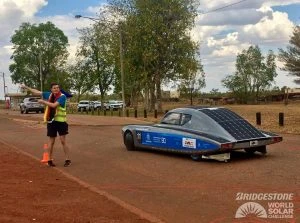
Solar Race Car
The ‘Nuon Solar Team’ continues to dominate the solar race across Australia that started in Darwin and will finish in Adelaide. Racing without conventional combustion engines, the various teams from around the world converged on Darwin having built their vehicles as completely solar-powered electric machines.
There are three categories that are completing the journey. The first being the quickest team to complete the 3000 km race distance – this race is known as the ‘Challenger Class’.
The second class is the known as the ‘Cruiser Class’, where there are points given to the teams for the number of passengers on board, the amount of energy that they are using in terms of the number of battery recharges that are occurring throughout the journey and the general practicality of the car. Being a part of the ‘Cruiser Class’, the points aren’t all about speed.
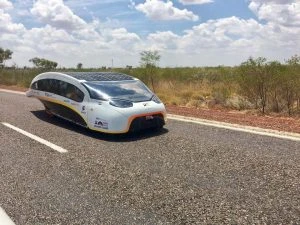
Solar Race Cruiser Class
Finally, the third category is known as the ‘Adventure Class’ which is the non-competitive class, allowing cars built for previous races of the event to run again – usually with new team members. The ‘Adventure Class’ can also be used as a catchment for those who, while meeting the exacting safety standards, may not have quite made full compliance with the latest race requirements. This is the category with the more laid-back travel style.
At the end of day three: the quickest team competing in the ‘Challenger Class’ is the ‘Nuon Solar Team’ from Holland.
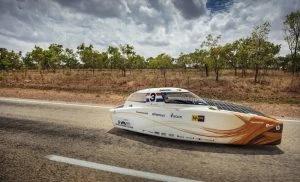
Nuon Solar Team
Second is the team from Tokai University.
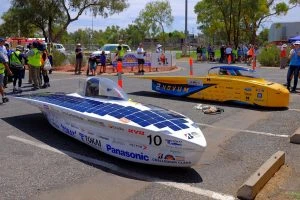
Tokai University Race Team
Third is the team from Michigan University.
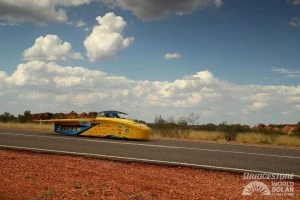
Novum Race Team
Just over halfway through the race and there will still be plenty of challenges ahead for all race competitors. One of the major influences on how well a car performs in this race is the amount of sunshine there will be. Cloudy days do impact the speed and progress of the cars.
This is an exciting race held here in Australia that is sponsored by Bridgestone, and it’s these sort of races that enable the evolution of production cars being run on electricity and solar energy. If you can, get out and have a look at the cars as they silently run into Adelaide in a few days time.
End of an era: 2017 Supercheap Auto Bathurst 1000.
There should be a sense of occasion about the 2017 Supercheap Auto Bathurst 1000. There should be a sense of majesty, of pride, of nostalgia…and perhaps there will be for those that follow what is now called, merely, Supercars, and for those that attend the yearly event that is seen as the pinnacle of motorsport in Australia, at the fabled Mount Panorama.
My earliest experiences of what was to become a significant part of my motorsport career were of watching highlights of the Hardie-Ferodo 500 on one of the just three tv channels available in Perth during the 1970s. Channel 7 would run a package from late Saturday night through to race start on the Sunday morning (early, Perth time) whilst I, bleary eyed and barely awake, would watch the blurry, grainy, images on our 48cm black and white tv screen. As times and technology changed, the quality would improve, colour was the norm, and the sound of the cars would be better. We’d have different camera views, more overhead shots from the choppers, in-car cameras, and people that didn’t follow motorsport would be able to name at least six of the drivers. We saw the racing move from Production Car style racing to the Group C to the international Group A to effectively Holden versus Ford to five manufacturers with racing cars loosely based on production cars.
As times and technology changed, the quality would improve, colour was the norm, and the sound of the cars would be better. We’d have different camera views, more overhead shots from the choppers, in-car cameras, and people that didn’t follow motorsport would be able to name at least six of the drivers. We saw the racing move from Production Car style racing to the Group C to the international Group A to effectively Holden versus Ford to five manufacturers with racing cars loosely based on production cars.
Now…we have five main channels and a raft of subsidiary channels delivered digitally. We have pay television, we have internet capable access and we have a category so far from its heyday that the impact it once had on a viewing audience and the attraction that once had grandstands full of bums on seats simply don’t exist anymore. Yes, there are the dedicated followers of motorsport, and there are those that can still tell you at least six names, but for the everyday Mr and Mrs Jones, the Supercars, the racing, and the lure of the mountain just aren’t there as they were once.
Australia’s primary non free to air television source is delivering, in the days before “The Great Race”, replays of previous races and highlights of the sport. This gives us a great comparison of what was, what is, and eyes off the “what will be” because in 2018 the rules change again. Holden and Ford, as two of the three manufacturers still making cars in Australia until 2016, when Ford ceased local manufacturing, will have their final Aussie built look alikes on track. Nissan, Volvo, and Mercedes-Benz once raced cars with five litre V8s, as per the category rules, even though two of the brands never released production based cars with that engine.
This gives us a great comparison of what was, what is, and eyes off the “what will be” because in 2018 the rules change again. Holden and Ford, as two of the three manufacturers still making cars in Australia until 2016, when Ford ceased local manufacturing, will have their final Aussie built look alikes on track. Nissan, Volvo, and Mercedes-Benz once raced cars with five litre V8s, as per the category rules, even though two of the brands never released production based cars with that engine.
People knew that and some of the gloss wore off, the appeal waned, and the numbers of bums on seats diminished at tracks. The move towards a non free to air delivery diversified a once captive market audience and for many, the need to pay for access to a product once “live and free” was the stopping point. Advertising for the category seems almost non-existent but, again, for the dedicated follower they’d not need to have advertising because they’d know where to get information.
2018 sees Holden race a car with a design no longer based on an Australian based, front engined and rear wheel drive, V8 optional, production car. Instead they’ll race a turbocharged V6 engine chassis. The category rules have once again changed that having a V8 engine ONLY is now not the norm. The rules now also allow a non four door sedan, and with Ford selling just about every Mustang they’ve imported over the last two years, there’s a fair chance we’ll see that shape on race tracks. BUT, but, the rules stipulate cars MUST be built on a common chassis, effectively making the cars we’ll see on racing tracks in 2018 visually different outside but engines aside, the same (more or less) underneath. Nissan raced a chassis based on a car that wasn’t, in Australia, ever available with a V8. Volvo and Mercedes-Benz withdrew after the 2016 season, and Ford branded cars raced without Ford Australia factory support. So in 2017, at “The Great Race”, we’ll see, for the final time, a fully V8 powered field in Supercars, at Mount Panorama. But where’s the sense of loss, of sadness, of regret, the sense of pondering what was once a broad ranging appeal category?
Nissan raced a chassis based on a car that wasn’t, in Australia, ever available with a V8. Volvo and Mercedes-Benz withdrew after the 2016 season, and Ford branded cars raced without Ford Australia factory support. So in 2017, at “The Great Race”, we’ll see, for the final time, a fully V8 powered field in Supercars, at Mount Panorama. But where’s the sense of loss, of sadness, of regret, the sense of pondering what was once a broad ranging appeal category?
Talk to anyone with a loose affiliation with motorsport and you’ll get a range of answers. You’ll also get a common theme….the cars that drew us to Bathurst every year are no longer relevant. Large sedans such as the Commodore and Falcon barely ripple the sales charts, SUVs and four wheel drive utes are what people buy and the win on Sunday, sell on Monday mentality that once (no pun intended) drove sales is no longer with us. Sunday the eighth of October, 2017, should be a day of occasion, a day of looking back at of over fifty years of history with an appreciation of what was, and a want for what will be. For me, that’s not the case and judging by the numbers of people that no longer show up at circuits around the country, it will really only be the dedicated and those that work with motorsport that may shed a tear.
Sunday the eighth of October, 2017, should be a day of occasion, a day of looking back at of over fifty years of history with an appreciation of what was, and a want for what will be. For me, that’s not the case and judging by the numbers of people that no longer show up at circuits around the country, it will really only be the dedicated and those that work with motorsport that may shed a tear.
Post event note: the 2017 event was won by David Reynolds and Luke Youlden after polesitter and expcted winner Scott McLaughlin and Alex Premat’s number 17 car had engine failure and retired on lap 72. Viewer numbers weren’t vastly different from the years shown.
2007 1.357 million
2008 1.249 million
2009 1.182 million
2010 1.046 million
2011 1.212 million
2012 1.253 million
2013 1.263 million
2014 1.351 million
Saudi Women Get The Right To Drive

The really big news in the motoring world of the past week or so isn’t GM’s plans for electric vehicles or the plans afoot for a Rolls-Royce SUV (although these are both hot issues). It’s the fact that at long last, the Saudi ban on women getting their drivers’ license has been lifted.
Up until now, Saudi Arabia has been alone in not permitting women to drive legally – even other countries operating under Shariah (Muslim or Islamic) law such as Qatar, Iran and Iraq let women drive legally (the only other country that prohibited women from driving was Afghanistan under the Taliban). Some of the reasons given included the possibility of women mixing with unrelated males (which goes against the cultural/religious norms) in the case of a traffic accident and the fact that driving can’t be done in a full burqa (although it can be done in a headscarf that’s pulled back where it doesn’t block peripheral vision much – as Western women in the 1920s knew well). 
The ban was lifted after a very long and determined campaign, mostly conducted via social media, by a group of Saudi women, who faced all sorts of possible penalties and repercussions for doing so, including one who was sentenced to a flogging for trying to drive until the King stepped in and overturned the sentence.
The ban was finally lifted on the grounds that constantly paying for taxis was putting a huge drain on the resources of many families; the rule about gender segregation was being broken left, right and centre because all the taxi drivers were men not related to their passengers; and women were finding it hard to get jobs and education, in spite of the Saudi government wanting to push tertiary education. As of September 26, Saudi women can now get their licenses.
OK, so what’s the big deal? Well, for one thing, female tourists can drive themselves around. Previously, if you had got your license overseas, you could still only drive in Saudi Arabia if you were issued with a local license… and they didn’t hand these out to women. A good chunk of us don’t have Saudi Arabia on our list of holiday destinations (barring those of us who want to make pilgrimages to Mecca for religious reasons), so why should we care over here in Australia?
We should care because it should make us stop and think for a moment about the freedoms we have here, and be grateful that we are allowed to get our drivers’ licences so easily (comparatively easily anyway!).
Do you remember the feeling of finally being grown up when you first got your L-plates, to say nothing of the feeling of independence and freedom when you got your P-plates and finally your full licence? You could go anywhere and do anything (almost) without having to sit down and negotiate timetables and the intricacies of working out who had to do what, where and when to ensure that Mum’s Taxi Service ran smoothly. You could also do your bit like a real adult when you could drive yourself to a proper job, and you felt like something of a hero/heroine who saved the day when you got a text from Dad saying that he had locked his keys in the car and needed you to drive over with the spares, or when you were able to drive your little brothers and sisters to school when Mum was sick and couldn’t do it.
Now imagine that you weren’t able do all that. And that you still couldn’t do it, even if you were an educated and intelligent capable adult with kids of your own and a proper job. Your choice of “proper jobs” would be really limited to what was within walking distance of the nearest bus stop, because if you had to pay for a taxi twice a day every day, the drain on your wallet would just about make it not worth working. And all this time, half of the members of your family do have the freedom to drive anywhere at any time, and you have to depend on their goodwill to go where you want or need to go. This situation will go on all your life.
You also have to depend on this small handful of other family members if your children need to be picked up after school, have got sports practice or if they need to get to the dentist… or the doctor. Keep your fingers crossed that your kids never need a trip to the emergency room with something that isn’t life threatening enough to warrant calling an ambulance (e.g. broken arms, saucepans wedged onto heads, sprained ankles, etc.) during the daytime when the family members with the licenses are away on business or out doing their own thing. Any doctor’s appointments, shopping trips even for basic groceries and visits to the dental clinic have to fit in with other people’s work schedules as well as your own. It’s Dad’s Taxi every time, with Mum’s Taxi not existing, which is annoying and stressful for Dad as well as for Mum.
Take a few moments right now to think about how your life would be different if your mum couldn’t drive, or your sister, or your wife (or yourself, if you’re a woman).
To take things to real extremes, if women didn’t or couldn’t drive cars, then the automotive industry might never have got off the ground in the first place. Karl Benz was on the point of giving up his experiment with the horseless carriage and was despairing that it would ever catch on, but then Bertha Benz loaded the kids into the new car and drove off to visit her mum as a publicity stunt to show that this new-fangled invention was so simple that even a woman could drive it with ease.
It’s also a good to take time to appreciate the fact that we can get licenses. Even if you live in the city and can commute by foot, bike or public transport, or if you work from home in a telecommute, be sure to get your licence, because you never know what the future might hold or when you’ll need to drive. Learn to drive and get that licence, and encourage your daughters to enjoy cars and driving just as much as you teach your sons.